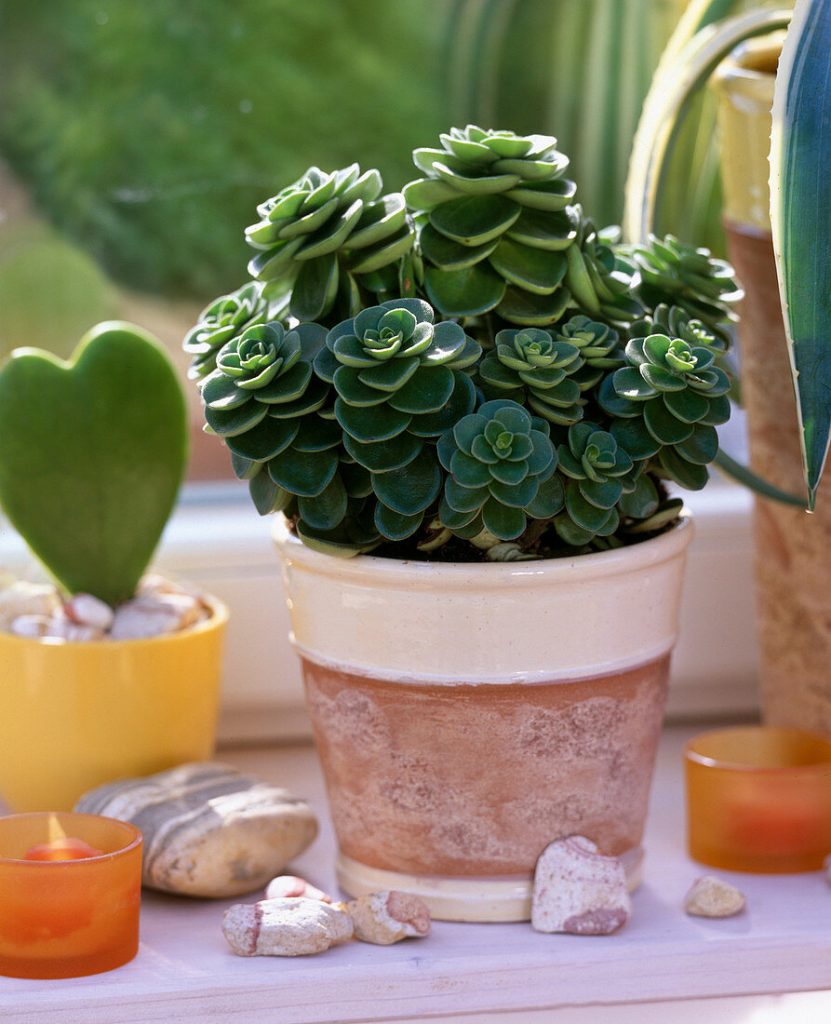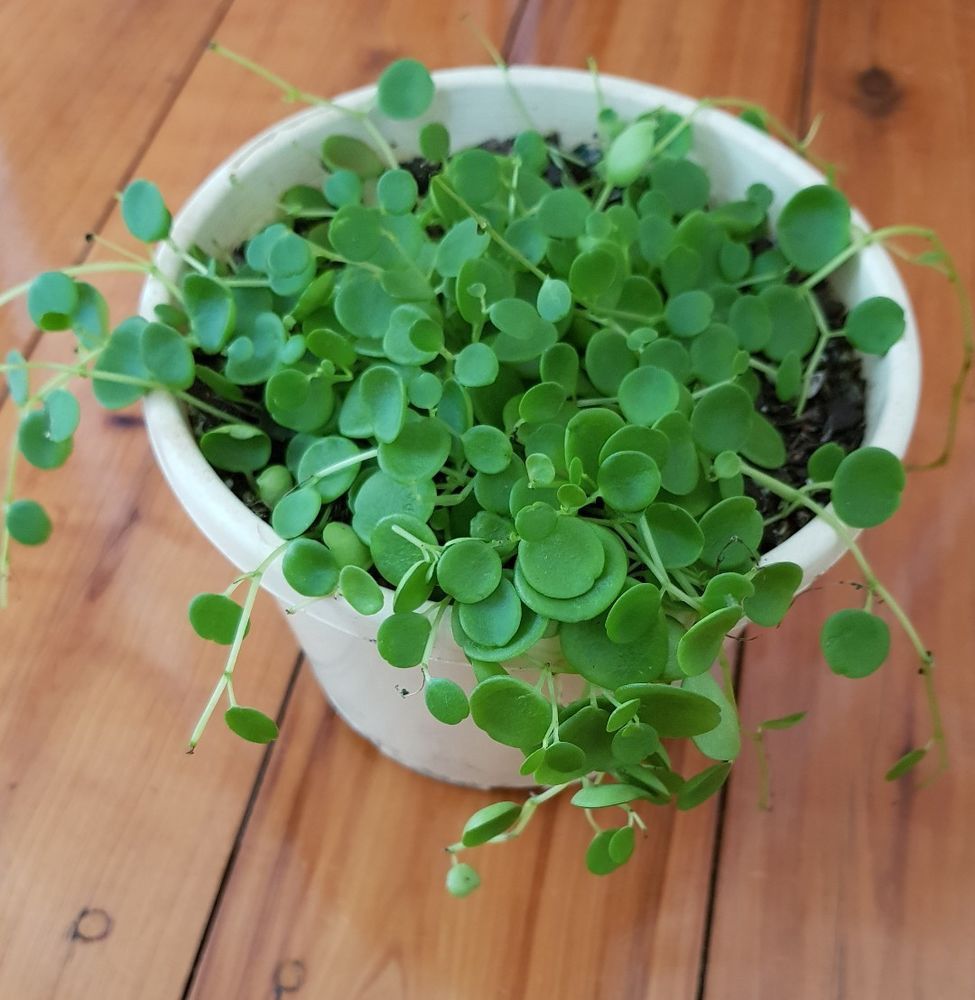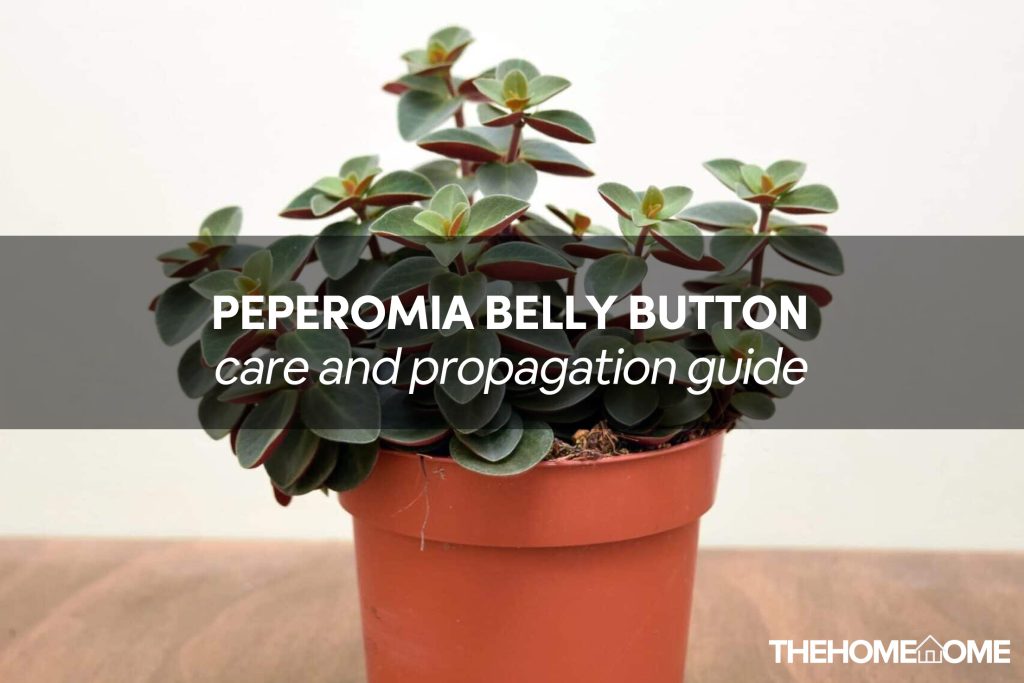What are the chances of finding a peperomia plant that is also succulent? Well, we have one for you! The peperomia belly button, also known as the red long plant is one of the lovely plants from the peperomia family that we cannot seem to stop talking about.
The plant is loved and grown by many for its beautiful foliage, which is perfect for color matching in the home
It is also loved for its smallness which makes it suitable for a bedside table, office, etc. the peperomia belly button, like the rest of its family members is relatively easy to care for, and however, everyone needs a guide to get it right.
This belly button care and propagation guide will help you hold your hands as you grow this plant from a baby to an adult.
Peperomia Belly Button Explained
The peperomia belly button is also known by its botanical name, peperomia verticillata, as well as red log. The plant is an evergreen succulent, native to tropical and subtropical regions, particularly Bolivia.
The peperomia belly button plant is characterized by its cupped and plumped leaves, with beautiful foliage of green on the upper side accompanied by a red wine-colored underside, which trails down to its stem.
Unlike many of the peperomia plants which are mainly grown for their foliage, this plant is grown also for its flowers which have panicle-like spiked flowers, in greenish-white colour.
| Common name | Peperomia belly button |
| Scientific name | Peperomia verticillata |
| Plant type | Evergreen shrub |
| Plant genus | Piperaceae |
| Soil type | 6.0 to 6.6 pH. Well draining soil |
| Light | Bright, indirect light. |
| Toxicity | Non-toxic |
| Native | Bolivia |
Belly Button Propagation

What better way to get more of the verticillata than to propagate it? This saves you the cost of purchasing, and will also serve as the perfect gift to your friends and family. For us, we believe that propagation is a time to interact with your plant.
The easiest and most effective ways of propagating your belly button plant are via stem and leaf cutting. Although it is commonly done in soil, you can propagate it in water too. We will teach you how to!
Needs For Propagation
- A healthy and mature belly button plant
- Sterilized and sharp knife or shear
- Succulent potting mix
- Pot
- Water
1. Leaf-Cutting
- Prepare your pot and potting mix before you begin the propagation process. We recommend that you follow the guide below on the right potting soil for this plant.
- Choose a healthy and mature plant and make your leaf cutting from it. You can cut out as many leaves as you will like to propagate. Choose a leaf with a short stem attached to it or one that is near to the stem’s base. Add some rooting hormone powder to the edges or tip of the leaf; you can as well dip the entire leaf into the powder. The rooting hormone helps to increase the chances of success
- Dig a hole of 1 to 2cm in the soil and place the leaf into it. Cover up the open hole and ensure that the soil is firm around the leaf.
- Water the plant thoroughly and cover it with a plastic bag. This will help with the greenhouse effect.
- Open the plant for some hours daily so your plant doesn’t get bacteria or infection from too much humidity.
- After the germination of new leaves, you can then move the leaves to their pots and give them regular belly button care.
2. Stem Cutting
- Prepare your soil before you begin the propagation process.
- Cut out a stem from your belly button plant; ensure that your stem has 4 to 5 leaves on it.
- Remove the leaves below, leaving only the leaves at the top of the stem.
- Dip the root in rooting hormone powder(this is optional, your plant will grow with or without the rooting powder)
- Make a hole in the already prepared soil, ensure the hole is about 1 to 2cm. put the cutting inside the hole and use your fingers to keep the soil firmly around the plant.
- Water it thoroughly and cover it up with a polythene bag for humidity.
- Open up for some hours during the day. After a few weeks, your plants will begin to sprout new leaves, root, and stem.
3. Propagation Via Water
- Growing in water is similar to growing in soil; however, the difference comes after making your cutting.
- After preparing your cutting, dip the stem into a glass of water, we suggest that you make use of rainwater if you have them stored.
- Place the water and plant where it can get indirect light and change the water as often as possible.
- When you notice the place has grown tangible roots, take them out of the water and grow them into prepared potting soil.
Peperomia Belly Button Care Guide
The verticillata plant grows to only about 12 inches in height when placed indoors and rarely grows above this. Not only does this plant do well in pots, but also in hanging baskets and balconies. Here is a care guide to help you.
1. Light
Peperomia belly button enjoys bright light and will grow best when it is provided with this light. However, you should be careful of direct sunlight, as this can cause scorching for your leaves. Your plant should also not be placed in the shade as this can make your plant leggy.
The perfect spot for your plant is the east or west-facing window; your plant will get the right type of light in here. If you do not have access to natural light, the belly button plant will grow in artificial light and do just fine.
Proper lighting encourages growth for your plant. We suggest you rotate your plant daily as it tends to become leggy towards the direction of light.

2. Water
Watering the peperomia belly button requires caution. Remember that the peperomia belly button is a succulent plant; hence there is a tendency to overwater, which will result in a lot of infection and diseases. The best type of water to use is rainwater.
The best time to water your succulent is when it is dried, you can know when your plant needs watering by dipping your finger or a stick into the soil, if the top 2-inch soil is dry, then it is time to water your plant.
Another alternative is to water your plant once every ten days or two weeks. You can also make use of a moisture meter to determine the water content in your soil.
3. Soil
The most important requirement for the right soil for your belly button plant is that it has to be well-draining. You must make use of a good combination of materials for your soil. The right, organic soil for your belly button plant should contain peat moss and perlite.
These two will help keep your plant draining enough, as well as nutrient full. We do not recommend already made the standard potting mix as they may not be draining enough for your plant. The right soil Ph for your belly button plant is 6.0 to 6.6.
4. Humidity
Unlike many other peperomia plants, which are lovers of humidity, the peperomia belly button does not do well with a lot of humidity. The plant is succulent, which means it can store up water and needs less humidity.
The average indoor humidity is right for your plant, and except when necessary or recommended by a plant doctor, it is best you do not purchase a humidifier.
Allow your plant to adapt to the surrounding condition. A 40% humidity level is just right for your plant.
5. Fertilizer
The belly button peperomia does not have a large fertilizer need. Over-fertilizing this plant will cause more harm than good for your plant.
The best type of fertilizer is a quality water-soluble fertilizer, with a nutrient combination of a 1:1:1 ratio. Ensure you do this only during the growing season, as the plants will be in their dormancy state in winter.
6. Temperature
In its natural habitat, the belly button plant lives at a warm temperature. This is to indicate that your plant will do well best when it is placed in a warm environment. The ideal temperature for your plant is between 65 and 80 degrees F, this is like the regular household temperature.
If you live in places with extreme weather, we suggest that you protect your plant and keep it from any temperature below 50 degrees F. also keep it away from an air conditioner or heater drafts.
Peperomia Belly Button Growing Tips
Here are some additional tips for growing this houseplant.
- These plants love to be root bound, hence you might not need to repot as often. It is also best you stick to the original pot you used at the beginning.
- When you want to repot, make use of a pot that is 1 inch larger than the first pot.
- Your verticillata plant will tolerate pruning from time to time. Remove dead and damaged plants, to keep your plant neat.
- Remember that your belly button plant does not cope well when placed in soggy soil; ensure to water them with extra caution.
- Ensure that your plant gets access to bright indirect light daily for proper growth.
FAQs
Here are some questions plant parents like you have about the Peperomia Belly Button.
Is The Peperomia Belly Button Poisonous?
No, the good thing about peperomia plants is that they are not poisonous and are safe with animals and children. However, it is best to keep your plants from kids and pets so they do not ruin them.
Why Is My Peperomia Belly Button Growing Slowly?
The peperomia belly button plant is a slow-growing plant, which means that compared to other plants, it will not grow as fast. We advise that you be patient with your plant. ensure also that you are doing everything right.
Why Is My Peperomia Belly Button Is Leaves Dropping?
Leaves dropping can be normal; however, it becomes a concern when your plant drops multiple leaves at a time. You might want to observe your plant properly and identify the problem.
Final Thoughts
The peperomia belly button (verticillata) is one of the most attractive plants in the peperomia family.
They are easy to grow and can turn the dullest room into a bright one. Growing the belly button peperomia is easy, however requires caution. Adherence to the care and propagation guide will help you have a good time with your plant.
Other peperomia plant care guides:

